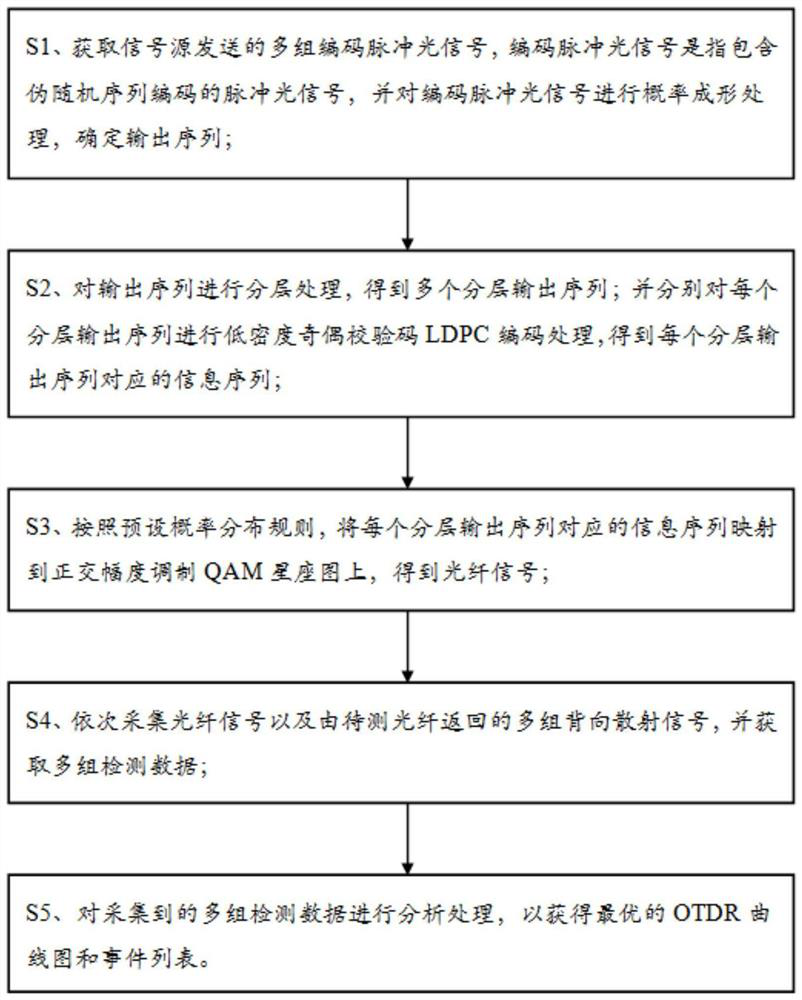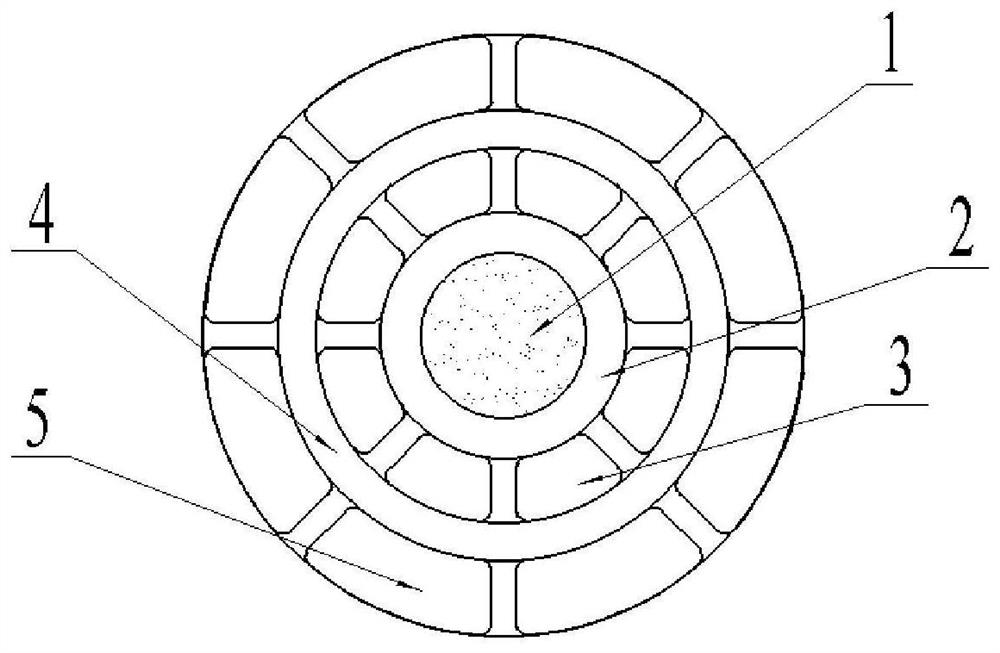Distributed optical fiber detection pulse coding method based on frequency division multiplexing
A distributed optical fiber and detection pulse technology, which is applied in electromagnetic wave transmission systems, multi-carrier systems, digital transmission systems, etc., can solve problems such as low channel capacity and large loss of channel transmission performance, and achieve improved bit error performance and optimized constellation diagrams Distributing and improving the effect of channel capacity
- Summary
- Abstract
- Description
- Claims
- Application Information
AI Technical Summary
Problems solved by technology
Method used
Image
Examples
Embodiment 1
[0031] The embodiment is basically as attached figure 1 shown, including:
[0032] S1. Obtain multiple sets of coded pulsed light signals sent by the signal source. The coded pulsed light signal refers to a pulsed light signal containing a pseudo-random sequence code, and perform probabilistic shaping processing on the coded pulsed light signal to determine the output sequence;
[0033] S2. Perform hierarchical processing on the output sequence to obtain a plurality of hierarchical output sequences; and respectively perform low-density parity-check code LDPC encoding processing on each hierarchical output sequence to obtain an information sequence corresponding to each hierarchical output sequence;
[0034] S3. Map the information sequence corresponding to each layered output sequence to the quadrature amplitude modulation QAM constellation diagram according to the preset probability distribution rule to obtain the optical fiber signal;
[0035] S4. Sequentially collect optic...
Embodiment 2
[0044] The only difference from Embodiment 1 is that the optical fiber signal and multiple sets of backscattering signals returned by the optical fiber to be tested are sequentially collected, and multiple sets of detection data are obtained, specifically including the steps: the first step, a set of backscattering signals Perform light splitting to obtain a number of scattered sub-signals in different bands; the second step is to perform photoelectric conversion, amplification filtering, and analog-to-digital conversion on each scattered sub-signal to obtain a set of different types of detection data. In this way, by obtaining a number of scattering sub-signals in different bands, and then performing photoelectric conversion, amplification filtering, and analog-to-digital conversion on each of the scattering sub-signals, it is beneficial to improve the accuracy of the detection data.
Embodiment 3
[0046] The only difference from Embodiment 2 is that in this embodiment, the optical fiber is in the open air. In some regions, due to the serious air pollution and the presence of sulfur dioxide and other gases in the air, acid rain is very likely to occur on rainy days. Typically, optical fibers are made of fiberglass material, which can corrode under the action of acid rain. The thickness of the part of the fiber corroded by acid rain will become thinner, and the reflection and refraction properties of the thinned part of the fiber will change, which will interfere with the propagation of Rayleigh light inside the fiber and eventually reduce the signal-to-noise ratio. Therefore, before modulating and demodulating the optical pulse, measures need to be taken to avoid adverse effects caused by acid rain corroding the optical fiber.
[0047] In this embodiment, a cladding layer is used to protect the optical fiber, as shown in the attached figure 2 As shown, the cladding la...
PUM
 Login to View More
Login to View More Abstract
Description
Claims
Application Information
 Login to View More
Login to View More - R&D
- Intellectual Property
- Life Sciences
- Materials
- Tech Scout
- Unparalleled Data Quality
- Higher Quality Content
- 60% Fewer Hallucinations
Browse by: Latest US Patents, China's latest patents, Technical Efficacy Thesaurus, Application Domain, Technology Topic, Popular Technical Reports.
© 2025 PatSnap. All rights reserved.Legal|Privacy policy|Modern Slavery Act Transparency Statement|Sitemap|About US| Contact US: help@patsnap.com


